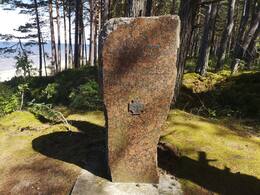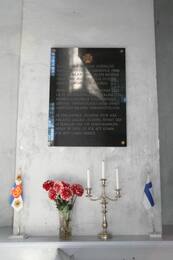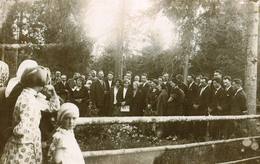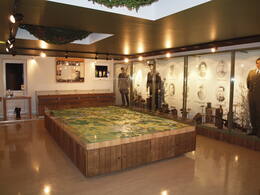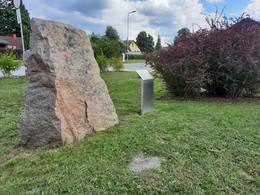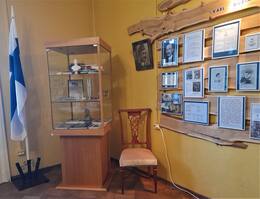Somu jēgeri I WW1
The Finnish Jaeger (Finnish: Suomen jääkärit, Swedish: Finska jäägartrupper, German: Finnische Jäger) was a German military unit formed from volunteers who left Finland as the 27th Royal Prussian Reservoir 1916-1917 participated in the First World War battles on the Eastern Front in the territory of Latvia. On February 13, 1918, in Liepāja, the battalion swore allegiance to the Finnish government and then returned to Finland. Jäger took part in the battles of the Finnish Civil War and in the Estonian and Latvian freedom fights as part of the Finnish Boys' Volunteer Regiment. After the war, the politically influential Jäger movement was formed (Finnish: Jääkäriliike, Swedish: Jägarrörelsen).
After the outbreak of World War I, in November 1914, the government of the Russian Empire drew up a program to restrict and Russify the autonomy of the Grand Duchy of Finland. As a result, some nationalist Finnish patriots were reluctant to fight for the Russian Empire and turned to Russia's enemy, Germany, to help prepare troops for Finland's independence struggle against Russia.
By the spring of 1916, there were already nearly 2,000 trained Finnish soldiers in Germany, and their unit in the German army was named the 27th Royal Prussian Jaeger Battalion. From June 12 to August 24, 1916, he gained combat experience as part of the German 8th Army Jelgava Group (Gruppe Mittau) on the Eastern Front near Peter on the Misa River. Later that year, the battalion was moved to the shores of the Gulf of Riga near Klapkalnciems. Here, from 27 August to 13 December 1916, the Finns were responsible for the northernmost sector of the German Eastern Front. After the winter battles, the 27th Royal Prussian Reserve Battalion was transferred to Liepaja on March 25, 1917, where it remained until February 1918. At that time, the battalion consisted of about 1,400 soldiers. After the Brestlitov peace talks began, the Finnish Jaegers were retired from the German imperial army. On February 13, 1918, the battalion swore allegiance to Finland at the Evangelical Holy Trinity Church in Liepaja. Already on February 15, the Jaegers left the port of Liepaja by boat to return to their homeland through the port of Vaasa and take part in the Finnish Civil War against the Reds. Well-trained Jaegers helped create the new Finnish National Army, which won the Civil War.
More information sources
Juris Ciganovs. The course of Finnish Jaegers in Latvia. SARGS.LV (19.03.2018): https://www.sargs.lv/lv/pirmais-pasaules-kars/2018-03-19/somijas-jegeru-gaitas-latvija
Elvita Ruka - Birzule. Through the battlefields of the Finnish Jaeger. Latvijas Vēstnesis, Nr. 103. (April 24, 1997): https://www.vestnesis.lv/ta/id/43133
Loyal to the flag and the legitimate government of Finland. liepājniekiem.lv (19.02.2008): https://www.liepajniekiem.lv/zinas/kulturvide/uzticigi-karogam-un-somijas-ikumigajai-valdibai/
Related timeline
Related objects
Monument in the memory of Finnish jaegers-sappers
Located in Engure district, on the side of the A10 motorway near Smārde pub.
A memorial was erected on the site where the Battle of Smārde took place in the field in 1916 during the First World War. A company of Finnish Jaeger engineers (~ 200 men) took part in the battles as part of the German army. Smell's Day has become an official holiday for the Finnish Army's military engineers, which is still celebrated.
The Finnish Jaegers were a unit of the German army formed during World War I. It consisted mainly of nationally-minded Finnish volunteers who had left the territory of the Russian Empire, Finland. The Battle of Smārde was one of the most important offensive battles of the Finnish Jaegers, where a new tactic was used at that time.
A month after the incident, the Russian army attacked the German army near Smārde. Latvian combat units carried out reconnaissance around Smārde, built a supply road “Latviešu ceļš” across the bog and took part in battles. Around 300 Latvian fighters fell in the battles. Like the Finnish Jaegers in the German army, the Latvian riflemen in the Russian army were the founders of their national states and armies.
Memorial plaque to the Finnish Jaegers in the Holy Trinity Cathedral in Liepāja
A memorial plaque dedicated to the Finnish Jaegers is located in Liepāja Holy Trinity Cathedral, Lielā iela 9.
The Finnish Jägers were a unit of the German Empire, formed by volunteers from Finland, which, under the name of the 27th Royal Prussian Jäger Battalion, took part in the First World War battles on the Eastern Front of Latvia in 1916-1917.
During World War I, the Grand Duchy of Finland was part of the Russian Empire and many Finns wanted a German victory in the war in order to promote the establishment of an independent state. On 20 November 1914, the Finnish Independence Movement was founded in Helsinki, which also planned to form the armed forces of an independent state. When the German government confirmed its readiness to train the Finns in January 1915, the recruitment of volunteers began and by the spring of 1916 almost 2,000 soldiers were stationed in Germany and were named the 27th Royal Prussian Jäger Battalion.
From June 1916 the battalion was on the Riga front, when it was moved to Liepaja until March 1917. After the February Revolution, the Russian Empire began to collapse and on 6 December 1917 the Finnish Parliament declared independence.
On 13 February 1918, the Battalion swore allegiance to Finland in the Holy Trinity Church in Liepāja. On 15 February 1918, the battalion left the port of Liepaja by ship to return home to the port of Vasa and take part in the Finnish Civil War against the Reds, who had staged a coup d'état on 27 January 1918. The well-trained and combat-experienced Jägers formed the core of the Finnish national army and a large number became commanders during the Second World War.
The battalion's flag, consecrated in Holy Trinity Church, became the first flag of independent Finland.
Memorial plaque to the Finnish Jaegers in the Holy Trinity Cathedral in Liepāja
A memorial plaque dedicated to the Finnish Jaegers is located in Liepāja Holy Trinity Cathedral, Lielā iela 9.
The Finnish Jägers were a unit of the German Empire, formed by volunteers from Finland, which, under the name of the 27th Royal Prussian Jäger Battalion, took part in the First World War battles on the Eastern Front of Latvia in 1916-1917.
During World War I, the Grand Duchy of Finland was part of the Russian Empire and many Finns wanted a German victory in the war in order to promote the establishment of an independent state. On 20 November 1914, the Finnish Independence Movement was founded in Helsinki, which also planned to form the armed forces of an independent state. When the German government confirmed its readiness to train the Finns in January 1915, the recruitment of volunteers began and by the spring of 1916 almost 2,000 soldiers were stationed in Germany and were named the 27th Royal Prussian Jäger Battalion.
From June 1916 the battalion was on the Riga front, when it was moved to Liepaja until March 1917. After the February Revolution, the Russian Empire began to collapse and on 6 December 1917 the Finnish Parliament declared independence.
On 13 February 1918, the Battalion swore allegiance to Finland in the Holy Trinity Church in Liepāja. On 15 February 1918, the battalion left the port of Liepaja by ship to return home to the port of Vasa and take part in the Finnish Civil War against the Reds, who had staged a coup d'état on 27 January 1918. The well-trained and combat-experienced Jägers formed the core of the Finnish national army and a large number became commanders during the Second World War.
The battalion's flag, consecrated in Holy Trinity Church, became the first flag of independent Finland.
Museum-room of the Finnish Boys
This museum room is situated in Saadjärve Nature Centre in the small borough of Äksi.
It was opened in 2002 on behalf and with the support of the Finnish Boys Association, Tartu Municipal Government and the Finnish state.
It provides an overview of the battles in Finland and Estonia in which the Finnish Boys participated during World War II. Here you will see a scale model depicting the battles fought in Jõgeva and Tartu counties and the uniforms, equipment, armaments, military decorations, personal belongings and photos of the Finnish Boys. The bunker is also open to visitors.
Free admission.
Monument in the memory of Finnish jaegers-sappers
Located in Engure district, on the side of the A10 motorway near Smārde pub.
A memorial was erected on the site where the Battle of Smārde took place in the field in 1916 during the First World War. A company of Finnish Jaeger engineers (~ 200 men) took part in the battles as part of the German army. Smell's Day has become an official holiday for the Finnish Army's military engineers, which is still celebrated.
The Finnish Jaegers were a unit of the German army formed during World War I. It consisted mainly of nationally-minded Finnish volunteers who had left the territory of the Russian Empire, Finland. The Battle of Smārde was one of the most important offensive battles of the Finnish Jaegers, where a new tactic was used at that time.
A month after the incident, the Russian army attacked the German army near Smārde. Latvian combat units carried out reconnaissance around Smārde, built a supply road “Latviešu ceļš” across the bog and took part in battles. Around 300 Latvian fighters fell in the battles. Like the Finnish Jaegers in the German army, the Latvian riflemen in the Russian army were the founders of their national states and armies.
Memorial stone to the Finnish Volunteer Regiment "Boys of the North"
Located in Alūksne, Jāņkalna Street 52, near Alūksne Narrow Gauge Railway Station.
On February 23, 2019, to mark the centenary of the Latvian War of Independence, a special memorial was created at the initiative of the Association of Independence Fighting Traditions (Finland) to honor the fallen Finnish volunteers, with a special boulder and information board. The memorial stone to Alūksne was removed from the Salpa line in Finland, which was built in 1940-1944. to protect the eastern border of Finland. The 1,200 km long Salpa line is one of the most important lines of defense in independent Finland, as well as one of the strongest and best-preserved defenses of its kind in Europe since World War II.
The stone brought to Aluksne symbolizes the struggle for independence of two nations - the Finns and the Latvians. A group of Finnish volunteers "Northern Boys" went to help Latvians protect the freedom of the new Latvian state. On February 21, 1919, the "Northern Boys" took part in fierce battles around Alūksne (Marienburg). After a five-hour battle at Alūksne railway station, the Finns occupied Alūksne. 23 Finnish volunteers were killed and many injured in the fight.
Collections of the Apriķi Museum and areas of activity of the Red Partisans
The Apriķi manor house houses the Apriķu Museum, whose exhibits tell about the ancient history of the region. The museum exhibits an exposition about the Finnish military figure Karl Gustav Mannerheim - 175 museum items, the interactive stand "KGMannerheim and Apriķi" (in three languages - Latvian, English and Finnish) with 6 sections - about the Apriķi manor, about KGMannerheim as a commander in the Winter War, as the freedom of Finland the leader of the battles and about his connection with the Aprikais.
The museum also displays World War II items with symbols of the German and Red Army, as well as a map - the areas of activity of the Red Partisans) and descriptions of the Red Partisans.
The Baroque ensemble of the Aprikku manor (Apprikken) building was formed by the Alokste River in the 18th century. at first. 20th century in the beginning, the owner of the manor is Carl Gustav Mannerheim, who later became the president of Finland, and is known as the author of the legendary Mannerheim line - the fortification system during the Winter War.
Related stories
About Finnish Jaegers in Latvia
The history of Finnish Jaegers is interesting because it is extremely similar to the fate of Latvian soldiers in World War I and its great role in the formation of the nation state. For the Finns, World War I also provided an opportunity to lay the foundations for Finland's independence and the creation of its army. The source describes an event when a monument to Finnish Jaegers is unveiled in Latvia.
Consecration of the Finnish Jaeger flag at the Holy Trinity Cathedral in Liepaja
The first flag of the Independent Finland was consecrated in 1918 in Liepaja, at the Holy Trinity Church, where the Finnish Jägers took an oath of allegiance to the legitimate government of Independent Finland before going home.






